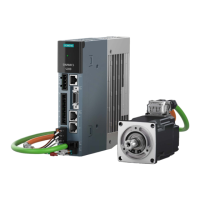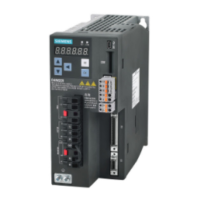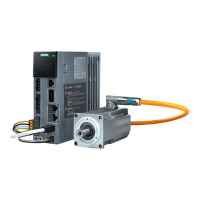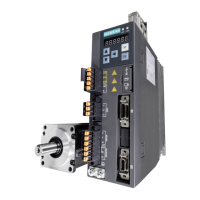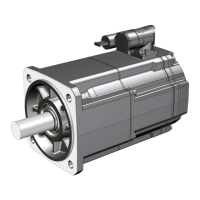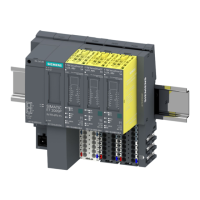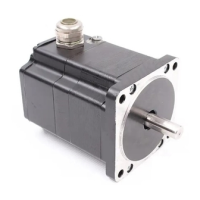To reduce compensation after a brake has been released, the torque oset can be
inter
connected as a supplementary torque setpoint. As a result, the holding torque is
immediately specied after the brake is released.
Automatically conguring weight compensation
Siemens recommends that this function is used for vertical axes with an almost constant
force due to weight. Start the automatic determination of the force due to weight using
p1558 = 1. As soon as the technique has been started, the torque, which is required
to hold the axis, is measured and entered into p1532. Further, interconnection between
supplementary torque setpoint and p1532 is established for the precontrol, and the scaling
of the precontrol channel is set to 100%.
The measurement can be started when the pulses are inhibited or the pulses are enabled
(p1558 = 1). If the measurement was started with the pulses inhibited, it is only executed
after the pulses have been enabled. In both cases, after starting, alarm A07991 (Drive: motor
data identication activated) is output. The alarm is automatically withdrawn after the motor
data identication routine has been successfully completed.
10.5.5 PTO function (for S200PN only)
Overview
Pulse Train Output is a simple and universal interface between a SIMATIC control and a SINAMICS
drive. PTO is supported worldwide by many stepper drives and servo drives and is used in many
positioning applications, for example, for adjusting or feed axes.
A pulse train encoder output which provides pulse signals can transmit the signals to the
controller to realize a closed-loop control system inside the controller, or transmit them to
another drive as pulse train setpoint for a synchronous axis or as control interface of another
device (for example, a line scan camera).
Description of function
PTO is also referred to as pulse/direction interface. The pulse/direction interface comprises two
signals.
• PTO direction output
The direction output denes the traversing direction. You can dene whether the PTO
position actual value should be inverted via p4422:
– Positive logic (= not inverted, default setting)
– Negative logic (= inverted)
• Maximum output frequency
The maximum output frequency represents the velocity and the number of output pulses for
the section to be traversed. You can set the maximal output frequency of the pulse train
output via p4405.
Functions
10.5General functions
SINAMICS S200 PROFINET servo drive system with SIMOTICS S-1FL2
362 Operating Instructions, 11/2023, FW V6.3, A5E51646752B AB
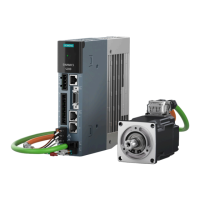
